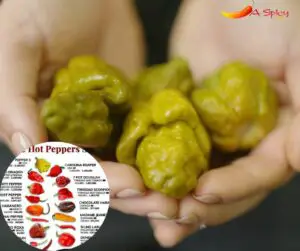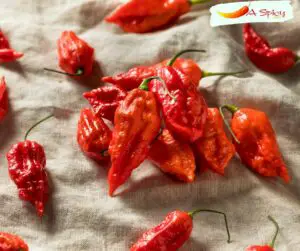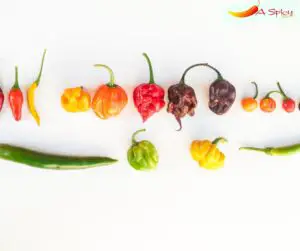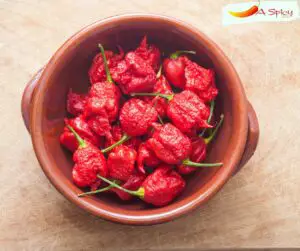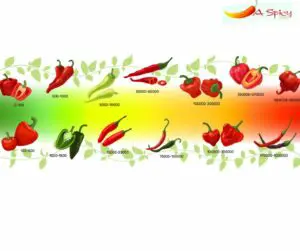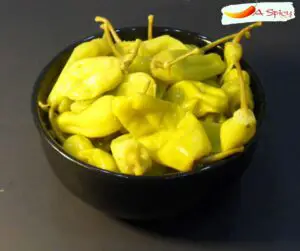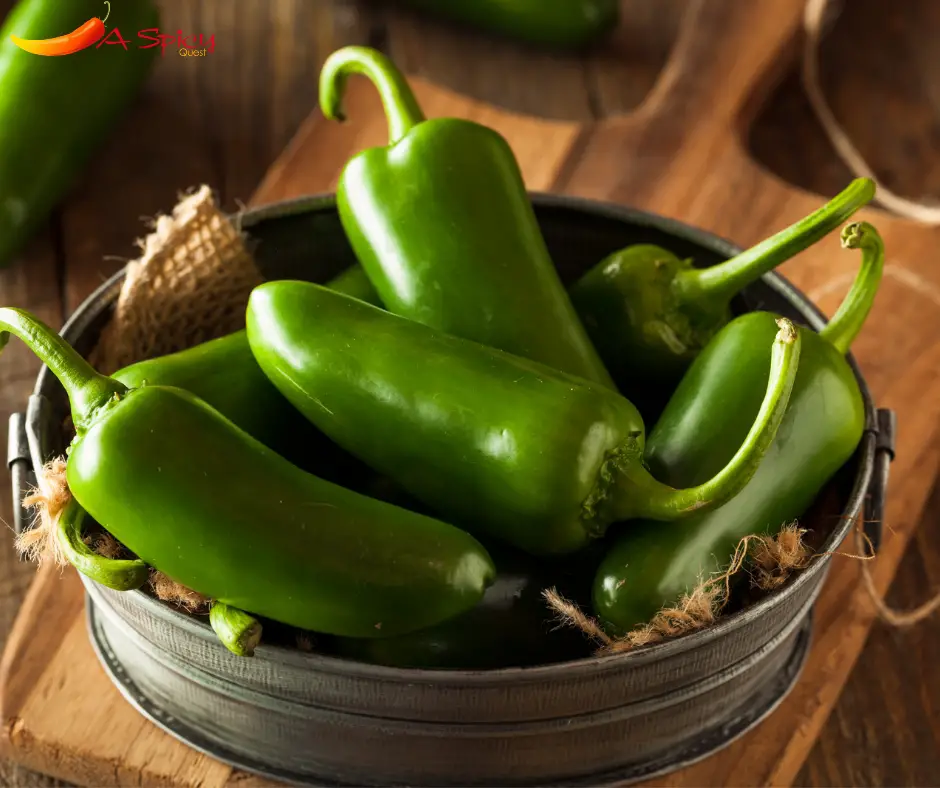
Everyone should be able to taste a jalapeno and not burn their mouth off. Many people think that hot sauces have to be “dangerously” spicy, but this is untrue.
There are mild hot sauces and super hot ones; it varies by brand. The Scoville scale is used to measure hot peppers’ heat levels.
Have you ever eaten a Jalapeno pepper? You’ll probably end up asking yourself; how many Scoville units is a jalapeno pepper?
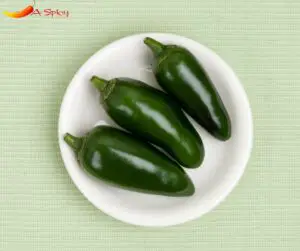
Jalapeno peppers are between 2,500 and 8,000 Scoville Units. This is not a precise measurement, as the pepper’s heat changes depending on how it is grown, harvested, and stored.
The exact number of Scoville Units in a jalapeno pepper depends on its size and how ripe it is.
The smaller the pepper, the more capsaicin it has. The more capsaicin it has, the hotter it will be. Large jalapenos may have less heat than small ones because they have more seeds inside them and fewer capsaicin glands on their surface area.
What Is a Scoville Unit?
The Scoville scale is a measurement of the spicy heat of chili peppers.
An American pharmacist, Wilbur Scoville created the scale, in 1912. In his study, he tested the pungency (spicy heat) of chili peppers by mixing them with sugar water and measuring how much sugar it took to dilute the capsaicin (the chemical that makes peppers spicy) until it could no longer be detected. The higher the number on the Scoville scale, the spicier the pepper.
The most common way to measure Scoville units is by using high-performance liquid chromatography (HPLC). HPLC uses a technique called thin-layer chromatography, which separates different chemicals based on their physical properties.
You can calculate its concentration by measuring how many times you need to mix something before you can no longer detect it.
The heat level of a pepper is determined by its chemical compound capsaicin; the hotter it is, the more capsaicin it contains. A bell pepper has no capsaicin at all, while an average jalapeno pepper has about 2,500 SHU.
What Are Jalapeño Peppers?
Jalapeño peppers are a type of large chili pepper that originated in Mexico. They have a distinctive flavor and heat. The jalapeño is the most popular chile pepper in Mexico, and it’s also widely used to spice up many dishes in the United States.
Jalapeños are often eaten raw with dips or added to salads, salsas, and other spicy dishes. They can also be pickled or used as an ingredient in sauces and soups.
Jalapeño peppers are small and slender with a mild heat level. They come in various shades of green and red, depending on when they’re picked and how long they’ve been stored after picking. Their flesh is crisp and juicy with a spicy flavor that goes well with many types of foods, especially Mexican cuisine.
You can find jalapeño peppers in supermarkets year-round, but their peak season runs from July through September (though you may find them earlier or later depending on where you live).
What Do Jalapeño Peppers Taste Like?
Jalapeños are quite spicy. They can be eaten raw in a salad or pickled to add some heat to your favorite dish. If you prefer not to eat your peppers raw, try them grilled, in salsas and sauces, or even stuffed with cheese and wrapped in bacon.
Jalapeños have a spicy and earthy flavor, with grass notes from the capsaicinoids. Capsaicinoids are what give jalapeños their heat. If you don’t like spicy foods, you might want to use a milder pepper like Anaheim or poblano instead.
What Is a Good Jalapeño Substitute?
There are many jalapeño substitutes that you can use in your cooking instead of the real thing. They will add the same amount of spice to your food without burning your skin or eyes.
1. Serano peppers
Serano peppers are a good substitute for jalapeños. These peppers have a similar heat and flavor but are not as messy to handle. Serano peppers are also more versatile and can be used in more dishes than jalapeños.
Serranos have a higher Scoville rating than jalapeños, which means they will have more heat when used as a substitute. However, if you’re looking for something that will give you the same amount of heat as a jalapeño, you can use two or three Serano peppers instead of one jalapeño.
You can also add serranos to soups, sauces, salsas, and stews that call for jalapeños. They’ll give your dish an extra kick while still letting its original flavor shine through.
2. Fresno Chile Peppers
Fresno chile peppers are a good substitute for jalapeño peppers. They are similar in flavor and have a similar heat level, but they have thicker flesh and tend to be longer than jalapeños.
Fresno chiles are often a good substitute for jalapeños. They have a similar heat level but slightly different flavors, which makes them ideal for cooking and canning sauces. They’re also easier to find than jalapeños.
The best part is that Fresno chiles are usually easier to find than jalapeños, so you’ll be able to make your dishes without having to hunt down an elusive ingredient.
3. Anaheim Peppers
Anaheim peppers are the way to go if you’re looking for a jalapeño substitute. They’re less spicy than jalapeños, but they still carry that signature smoky flavor that makes them so tasty. If you want something milder, try using Anaheim peppers instead of jalapeños.
If you love the flavor of jalapeños but do not quite like their level of heat, Anaheim peppers are a great substitute. They’re milder than jalapeños and have a similar texture, so they can be used in almost any way you’d use jalapeños.
Conclusion
So the next time you’re eating chili, know that the Jalapeno is just as hot as its more famous cousin, the Habanero. That fire is no joke.
When you’re in the market for a jalapeno, shop carefully. Try to get a pepper that looks plump and healthy so you can really enjoy cooking with it. It just might make your next dinner memorable.

